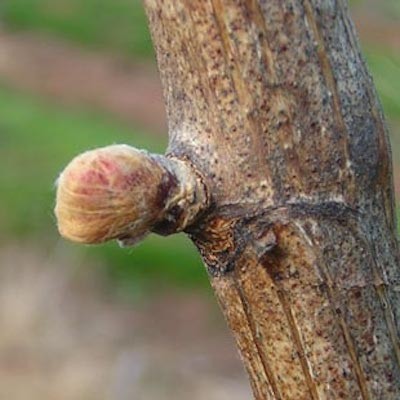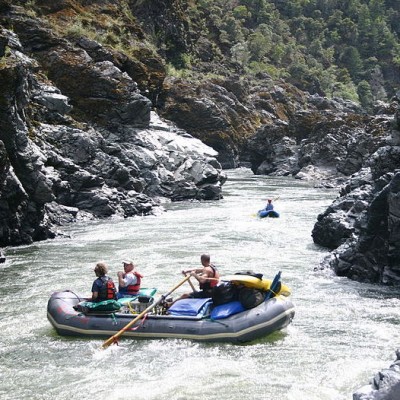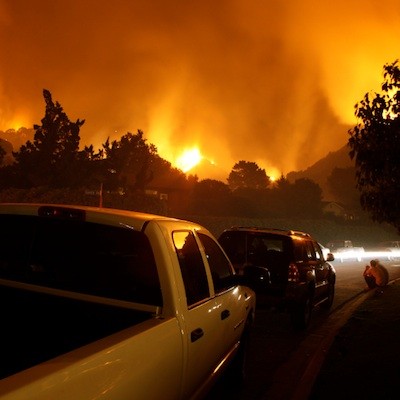2015 Could Be Worst-Ever Conditions for Fourth of July Fireworks





 Email to a friend
Permalink
Email to a friend
Permalink
Wednesday, June 24, 2015
Zach Middleton, GoLocalPDX Contributor
The next time you go to light an M-80, Roman candle, or other illegal firework, consider this: since 2010 there have been 839 fires caused by fireworks in Oregon at a total cost of $3.9 million in property damage. Climatic conditions this fourth of July holiday could increase those numbers to levels never before seen.
"All Oregonians share the responsibility to use only legal fireworks and use them carefully," says Oregon State Fire Marshal Jim Walker.
It shouldn’t be surprising that Fourth of July fireworks pose a serious fire risk. But this year the risk of major wildfires is acute.
Snowpacks and water reservoir levels are currently at extremely low levels. Twenty counties in the state have been declared drought emergencies by Governor Kate Brown, and it’s likely that even more will be labeled as such soon.
At this point last year, only ten counties were labeled drought emergencies, and the Oregon Department of Forestry still spent $75.6 million dollars fighting large-scale wildfires.
Exacerbating the already-low water supplies, temperatures are expected to soar above 100 degrees in parts of Oregon through the end of June, with the potential to smash all-time heat records for the month. Much of the state is as dry as a tinderbox, and one stray bottle rocket or Roman candle could light a fire of epic proportions.
Teens and young adults are often attracted to risky behaviors with fireworks, but lack the foresight to predict the potential consequences of their actions. This phenomenon was put on display last July when two teens launched a firework into the attic of a Vancouver, Washington home, burning it to the ground.
Fireworks are fun, but losing everything you love to a fire or costing taxpayers millions of dollars in firefighting budget is not. So as the OSFM says, when it comes to fireworks, “Keep it Safe, Keep it Legal.”
Using Fireworks Responsibly
Wheeler reminds Oregonians that fireworks are restricted in many public places such as parks, beaches, and campgrounds. Mortars, bottle rockets and other high-flying missiles are illegal in Oregon, and using them can result in a fine of up to $1,000 per violation.
The OSFM encourages Oregonians to consider the four Bs of safe firework use:
- Be Prepared before lighting fireworks: keep water available by using a garden hose or bucket.
- Be Safe when lighting fireworks: keep children and pets away from fireworks.
- Be Responsible after lighting fireworks: never relight a dud. Wait 15 to 20 minutes then soak it in a bucket of water before disposal.
- Be Aware: use only legal fireworks and use them only in legal places.
Related Slideshow: Oregon Industries Jeopardized by Warm Weather
The balmy weather Oregon is experiencing, although pleasant, does not bode well for some of the state’s biggest industries.
The early, hot spring has posed risks to Oregon’s wine industry, crops, forest services, apiculture (bees), outdoor recreation such as rafting, and has taken a serious toll on the state’s winter recreation industry.

Prev
Next
Wine
When Spring arrives early, all biological processes get going earlier, including one of the most finicky Oregon crops -- grapes, which sustain Oregon’s $207.5 million wine industry through 950 vineyards and over 600 wineries.
Due to the warm weather, vineyards across the state are experiencing “bud break” -- the buds coming out of the vine -- about three weeks earlier than normal, two weeks earlier than in 2014, said Oregon State University Vitriculture expert Patty Skinkis.
“The main concern has to do with the potential for frost damaging growing tissues,” Skinkis said. “Once they start growing that green tissue, it’s susceptible to frost.” Frost damages the most fruitful shoots, making for a significant reduction in yield.

Prev
Next
Winter Sports
“This has been a very, very stingy snow season for us,” said Mt. Hood Meadows spokesman Dave Tragethon. The total number of visits for the resort was down by roughly one third, unable to open until December 22, almost a month late.
Hoodoo Ski Area, near Sisters, was open just ten days. Warner Canyon did not open at all. Cooper Spur and Willamette Pass did not open until January, while Ski Bowl, Ferguson Ridge, Mount Ashland, and Spout Springs could not consistently remain open.
Only a handful of Oregon resorts stayed open for most of the year, including Timberline, Mount Bachelor,Mt. Hood Meadows, and Anthony Lakes Mountain Resort.

Prev
Next
River Recreation
Lower snowpack means less water in the rivers. Some outdoor recreational industries, such as river rafting, will take a hit this summer.
Craig Wright, owner of Oregon River Company since 1978, said he expects low water levels to negatively impact the bottom line of the company, which employs 25 full and part time staff.
“It’s tense,” he said. “It’s not unprecedented but it’s pretty darn unusual.”

Prev
Next
Apiculture (bees)
Bees are coming out early, signalled by the early bloom of flowers.
“It’s a worry that if the weather doesn’t stay like this, if it gets rainy or cold, the bees can’t sustain themselves,” said entomologist Ramesh Sagili.
Bees can’t go outside the hive and forage if the temperature drops below 40 or 45 degrees farenheit. Ideal foraging temperature is 55 degrees.
“If bees die, then pollination becomes a problem,” Sagili said. “Agricultural crops are very dependent on honey bees.”

Prev
Next
Agriculture
Governor Kate Brown declared a drought emergency Tuesday in Lake and Malheur counties, both of which rely on agriculture as a key industry. A snowpack between six and 40 percent of normal was the leading factor in the decision, according to Keith Mills of the Oregon Water Resource.
Overall crop yields will be lower, as farmers focus more on money-making crops, switching to crops like wheat which get higher yield for less water.

Prev
Next
Forest Fire Fighting
In 2013, firefighting costs ran an all-time record of $122 million, as crews battled more than 100,000 acres. The state tapped a $25 million insurance policy, and turned to the state’s general fund to pick up the over run.
In 2014, the ODF spent $75.6 million fighting over a thousand fires that burned more than 50,000 acres of forest. Again the state tapped its full insurance policy of $25 million and the over run came out of the state’s general fund.
According to ODF spokesman Rod Nichols, there is no indication this year will be any different.
Related Articles
Enjoy this post? Share it with others.





 Email to a friend
Permalink
Email to a friend
Permalink

















 Delivered Free Every
Delivered Free Every
Follow us on Pinterest Google + Facebook Twitter See It Read It